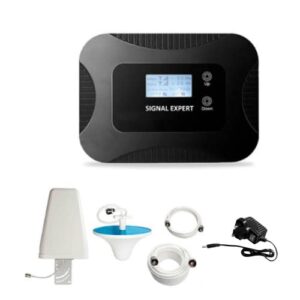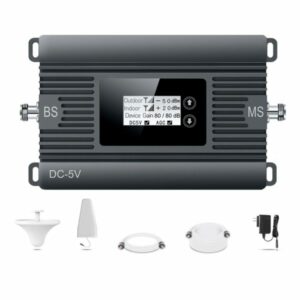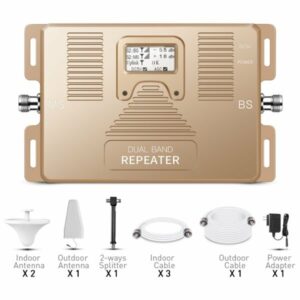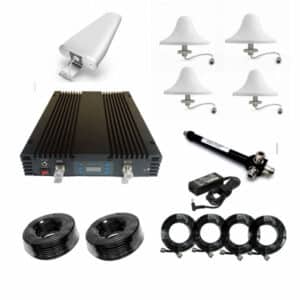In the quest for seamless communication, a reliable mobile signal is essential. For Spark & Skinny mobile users in New Zealand seeking to boost their 2G signals, the 850 MHz frequency band stands out as a key solution. This comprehensive guide explores the features, benefits, and considerations surrounding 850 MHz mobile signal boosters tailored to enhance 2G connectivity on the Spark & Skinny networks.
Understanding the Need for Boosting 2G Signals
While 4G and 5G technologies dominate the mobile landscape, certain areas may still rely on 2G signals, especially for voice calls and basic messaging. An 850 MHz mobile signal booster becomes crucial in such scenarios, ensuring a stable and reliable 2G connection.
Frequency Band
Spark and Skinny as a mobile carrier in New Zealand, utilizes the 850 MHz frequency band for its 2G network. Understanding this specific frequency is fundamental when choosing a signal booster to ensure compatibility with Spark’s network.
Features of 850 MHz Mobile Signal Boosters
Our 850 MHz mobile signal boosters come with a lot of features that make it the best device for boosting 2G signals for Spark mobile in New Zealand. Here are some of the features of 850 MHz signal boosters.
Frequency Specificity
Dedicated to the 850 MHz band, these boosters are designed to capture and amplify signals within this frequency range, optimizing 2G connectivity for Spark users.
Coverage Area
The coverage area of a signal booster depends on factors like signal strength, building materials, and antenna placement. Users can choose boosters with varying coverage capacities based on their specific needs.
Carrier Compatibility
Confirm that the selected booster explicitly supports Spark’s & Skinny’s 2G frequency (850 MHz). This ensures that the device aligns with the carrier’s network specifications, providing an effective and reliable boost.
Signal Amplification
A key feature is the booster’s ability to amplify weak signals. Look for devices with high gain levels to ensure a significant enhancement in signal strength, translating to improved call quality and reliable text messaging.
Automatic Gain Control (AGC)
AGC technology is essential for maintaining a consistent signal level. It automatically adjusts the booster’s gain based on the incoming signal strength, preventing signal distortion and interference.
Easy Installation
850 MHz mobile signal boosters often come with user-friendly installation guides. Most setups involve placing an external antenna to capture the outdoor signal, connecting it to the booster unit, and distributing the enhanced signal through an indoor antenna.
Considerations for Spark & Skinny 2G Users
Carrier Approval
While signal boosters are legal in New Zealand, it’s advisable to inform Spark about the installation. While not mandatory, carrier awareness helps in addressing any potential concerns and ensures responsible usage.
Coverage Area Assessment
Prior to purchasing, assess the size and layout of the intended coverage area. This evaluation aids in selecting an 850 MHz mobile signal booster that aligns with the spatial requirements of the space. Our 850 MHz boosters have four variants that cover 300 SQM, 500 SQM, 1000 SQM, and 5000 SQM areas.
Compliance with Regulations
Confirm that the chosen signal booster complies with regulatory standards to avoid legal issues. Most reputable boosters are FCC-approved, providing assurance of adherence to industry standards. Our signal boosters are built with the guidelines of the Telecom Regulatory Authority of New Zealand. Hence, our signal boosters are completely safe and legal to use in New Zealand for both personal and commercial purposes.
Installation and Maintenance
Installing our mobile signal boosters is very easy and fast. You can install them in less than 15 minutes without any special tools or technical skills. For any help, you can refer to the mobile signal booster installation guide provided in the booster kit.
External Antenna Placement
Position the external antenna where it can capture the strongest outdoor signal. This may involve experimenting with different locations to achieve optimal results.
Indoor Antenna Placement
Place the indoor antenna strategically to ensure even signal distribution throughout the designated coverage area. Follow the manufacturer’s guidelines for optimal placement.
Powering Up
Connect the booster to a power source and monitor the signal strength on your device. Our boosters have LED indicators that assist in fine-tuning the setup.
Ongoing Monitoring
Periodically check the booster’s performance to ensure consistent signal enhancement. Pay attention to any firmware updates provided by the manufacturer for continued optimization.
Conclusion
In the pursuit of an enhanced 2G signal on the Spark & Skinny network in New Zealand, an 850 MHz mobile signal booster is an invaluable ally. Understanding the specific requirements, features, and considerations associated with these boosters empowers Spark & Skinny users to make informed decisions, ensuring optimal connectivity for voice calls and messaging in areas where 2G signals prevail. By navigating this guide, you can embark on a journey towards a more robust and reliable mobile communication experience. If you have any questions regarding any of our products please contact us.










